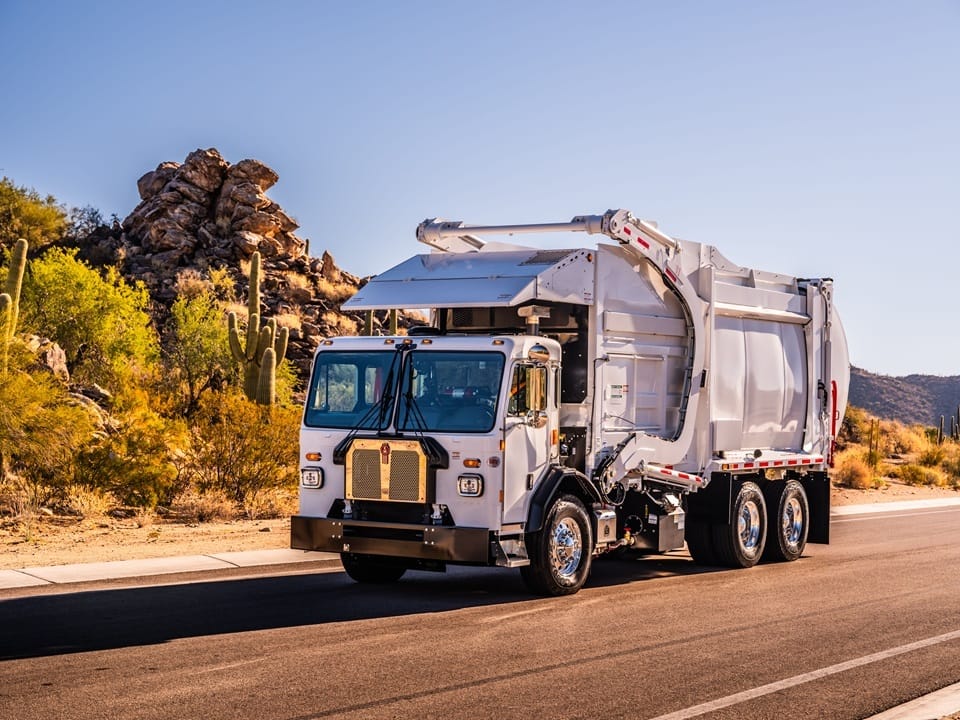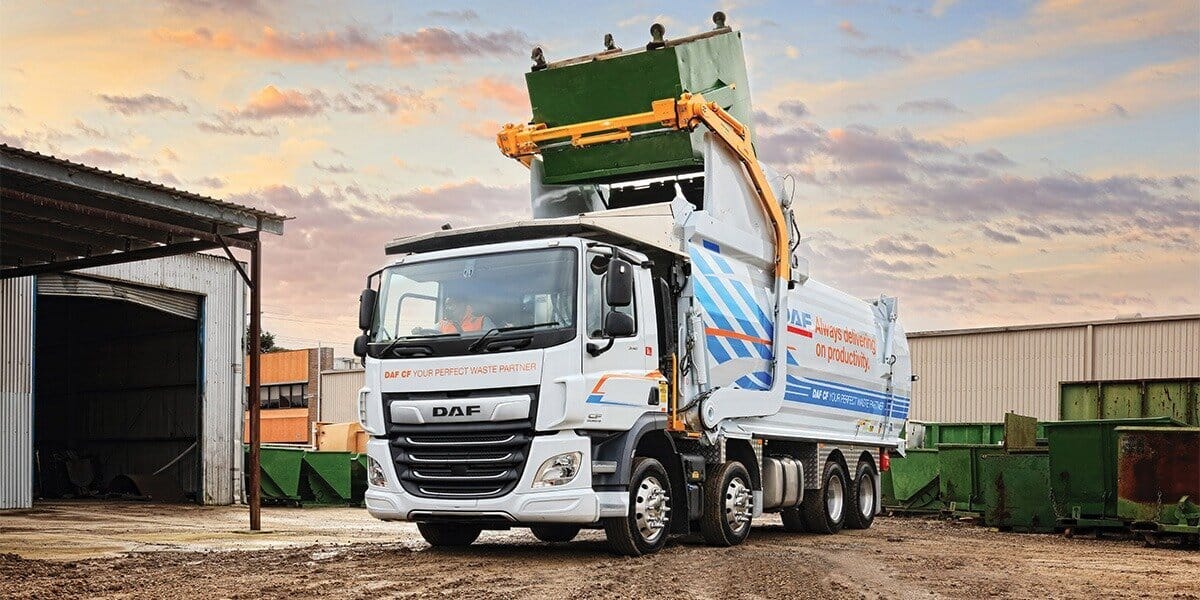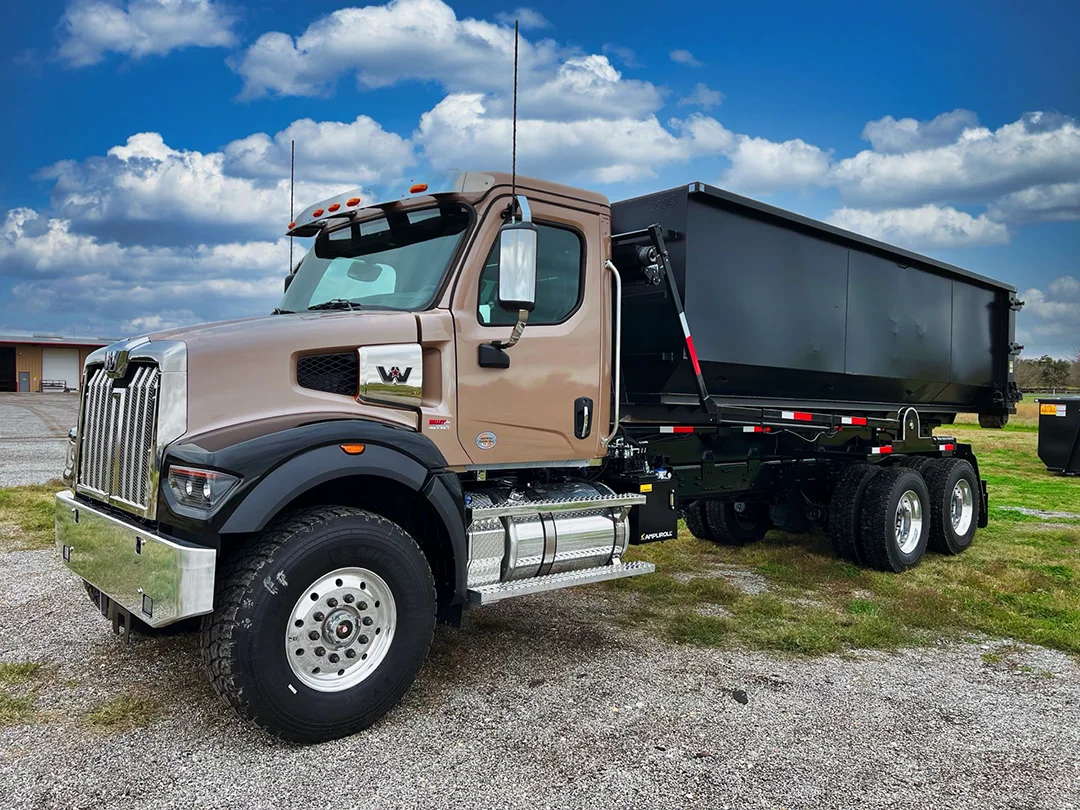- The Upfit Insider
- Posts
- Garbage Truck Cabs Are Failing
Garbage Truck Cabs Are Failing
Two industry veterans break down why U.S. cab-over front loader trucks still feel like they’re from the 1960s — and what it would take to finally move forward.

Cab Over Front Loader Trucks Are Falling Behind
Every operator has a story about a miserable cab. The kind where the A/C never cools, the seat feels welded to the frame, and every bump rattles through your spine.
That’s the daily reality for many cab over front loader truck drivers working long waste collection routes across the U.S.
While Europe builds cabs that feel like modern workstations, American fleets are still wrestling with designs that punish operators instead of protecting them.
So we asked two people who live and breathe this work — Donald Bain, a transport company owner and former OEM trainer, and Michael Mnoian, an experienced refuse operator and fleet owner — what’s really holding the U.S. back.
What Drivers Actually Feel Inside the Cab
Donald doesn’t sugarcoat it.
“The most common comfort complaint I hear is lack of space and poor ride quality. Cab-over garbage trucks tend to have cramped interiors, limited seat adjustability, and minimal suspension comfort.”
He’s been in those seats himself.
“You feel like you’re riding the front axle. Noise, vibration, and heat buildup in the cab are constant. It feels more like a machine compartment than a workplace designed for people.”
That kind of fatigue doesn’t just hurt morale — it reduces downtime only when addressed early. Comfortable cabs keep operators alert and trucks productive longer.
Michael’s take matches that reality.
“I’ve owned a Peterbilt 520, Mack LR, and Mack TE64. The Pete was small and had poor visibility because of the engine hump. The Mack LR had room but the A/C leaves much to be desired — in Texas heat, it’s almost undriveable. The TE64 is tight again for bigger guys. They all look like they’re from the 1960s.”
For comparison, fleets running automated carry systems in newer European models say those setups don’t just improve efficiency — they keep the driver fresher through the day.

🎁 Become a Founding Member
Join for $5/mo lifetime and get:
Work Truck ROI Calculator
Operator-First Ergonomic Upfit Playbook
Snowplow Mastery Guide
The Fleet Spec Playbook
Spec Fail Prevention Workbook
Why U.S. Cab-Overs Fell Behind
Donald traces the problem to how the American market evolved.
“In the U.S., conventional cab trucks dominate freight and vocational markets, so OEMs have historically put more R&D money into those designs. Cab-overs have been a niche — innovation just fell behind.”
He adds that regulations play a part too.
“European trucks are shaped by space limits and emissions rules that favor compact, efficient cab-over designs. Here, longer wheelbase allowances let conventional cabs flourish.”
And when it comes to driver culture:
“American drivers historically prefer larger, roomier cabs. OEMs haven’t felt the pressure to redesign cab-overs for comfort because the market hasn’t demanded it — yet.”
Michael agrees but puts it bluntly:
“This is the million-dollar question. Volvo and DAF/PACCAR have fantastic units all over the world. I have no idea why we can’t get those here.”
If you’re spec’ing a truck and want to understand how market demand shaped every chassis style, check out 5 Essential Features to Look for in Vocational Trucks — it breaks down the difference between durability and true driver usability.
What a Modern, Driver-First Cab Should Look Like
Donald describes a truck that finally feels built for humans.
“It would be a blend of comfort, safety, and smart technology.”
He lists what matters most:
Better suspension and wider seat adjustability for long shifts and different body types.
A more spacious cab layout.
An advanced HVAC system — the biggest complaint. “Even with the A/C blasting, it’s like the heated seat is stuck on.”
Low step height and better entry design for constant in-and-out routes.
Real storage space for gear and documents.
“In short, it should feel like a mobile command center — not a steel box on wheels.”
Michael’s version echoes the same theme:
“Easy to enter and exit, good visibility, and driver comfort as a priority. That’s what makes a modern cab.”
These improvements aren’t about luxury — they’re about safety, retention, and ROI. As covered in Work Truck Ergonomics That Save Money, ergonomics isn’t just comfort — it’s profit protection.

Why Support and Service Still Matter
Michael highlights an often-ignored part of the experience — dealer and parts support.
“If we can’t get support from OEMs, we can’t buy your product. Waiting weeks for a $100 part is a nightmare, especially for small businesses.”
That kind of downtime kills margins. For fleets managing commercial front loaders or front load garbage trucks, the equation is simple: no support, no uptime.
It’s the same principle behind The Roll-Off Truck Buyer’s Playbook (Spec, Cables, Hooklifts & ROI) — every spec and support decision should protect uptime from the first day the truck hits the street.
FAQ — Cab-Over Front Loader Trucks
Why do drivers say cab-over trucks are uncomfortable?
Because most U.S. models haven’t changed in decades. Interiors are cramped, ride quality is rough, and A/C systems struggle in heat.
What could make them better?
Lower step heights, adjustable suspension seating, advanced HVAC, and more cabin space — features both Donald and Michael emphasized.
Why haven’t OEMs updated them?
Market demand has been low and conventional cabs dominate U.S. fleets. But changing workforce expectations are forcing OEMs to pay attention.
Support The Authors
Follow Michael Mnoian and visit his company:
Follow Donnie Bain and check out his transport company:
Wrap-Up
Every complaint Donald and Michael shared leads to one truth: the cab isn’t just a seat — it’s the workspace.
Until cab-over builders start treating it that way, drivers will keep calling these trucks relics.
Founding Members get access to ROI calculators, spec playbooks, and ergonomic upfit guides.
Question:
What’s the worst cab design flaw you’ve ever dealt with on the job?
—
Leyhan
Founder, The Upfit Insider


Reply